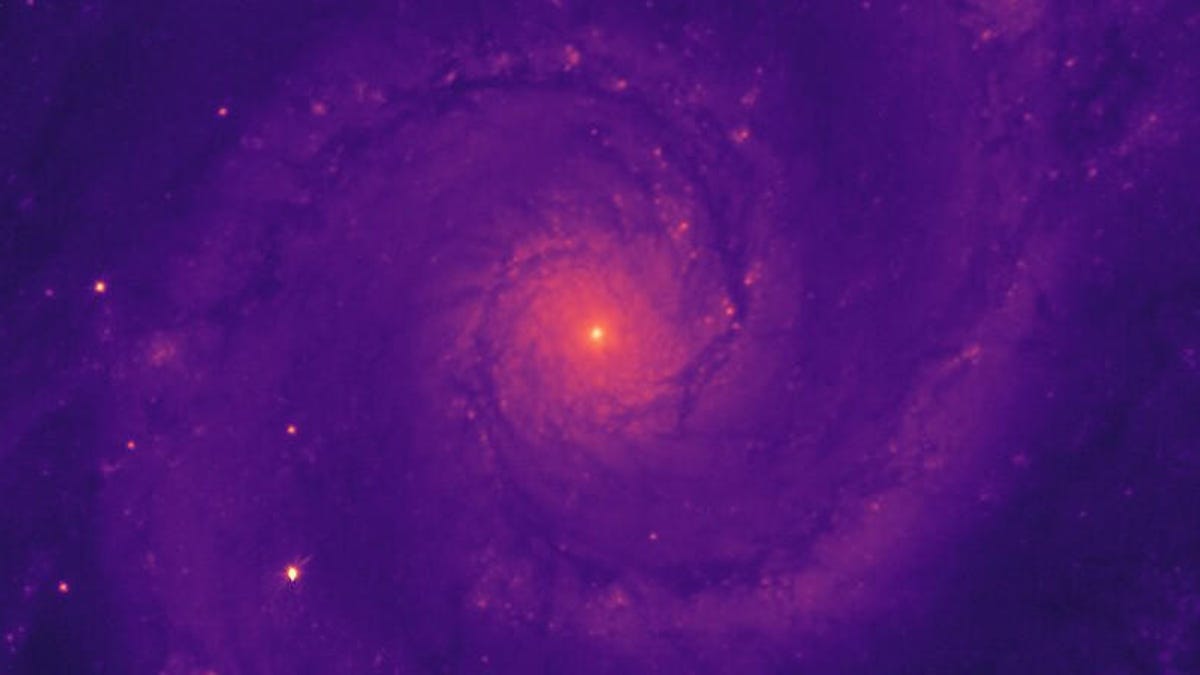Astronomers capture first image with dark energy instrument's new lenses
A high-tech telescope upgrade will probe the cosmos to explain one of the universe's great mysteries.

Gazing at the deep universe reveals a strange phenomenon -- it appears that the universe is expanding and galaxies are accelerating away from us. Scientists have hypothesized that this expansion can be attributed to an invisible, unknown force known as "dark energy" that makes up around 70% of the total energy in the universe.
As part of the effort to understand this perplexing force, scientists have been building an instrument that will eventually gaze across the sky at 40 million galaxies -- and it's just passed its first major test.
The Dark Energy Spectroscopic Instrument (DESI) can be thought of as an upgrade to the 46-year-old Mayall Telescope, located at Kitt Peak National Observatory in Tucson, Arizona. On Monday, April 1, after being fitted with a suite of six new lenses, DESI captured its "first light" image of the red-purple spiral of galaxy Messier 51 above.
"It was an incredible moment to see those first images on the control room monitors," said Connie Rockosi, an astrophysicist working with DESI, in a press release.
The six lenses in the package are arranged in a special device known as a corrector, that is attached to the Mayall Telescope's primary mirror, and will allow DESI to see around one-third of the visible sky across the length of its five-year mission.
The delicate lenses were crafted in several manufacturing facilities across the world, including Japanese glass manufacturer Ohama group, NASA's Goddard Space Flight Center and University College London. The fact the lenses bounced around the globe meant there was no guarantee that this first light test would be a success.
"We had a half-dozen vendors involved with making and polishing the glass," explains Peter Doel, who led design of the optical system. "One mistake would have spoiled everything. It's thrilling to know that they survived the journey and work so well."
Testing of the lenses will continue for six weeks, but are only the first part in a series of trials to get DESI operational. DESI itself is still being assembled, so the images being produced during the testing are actually the result of a faux DESI double, fitted to the Mayall Telescope to make sure the lenses operate as planned.
The instrument will officially begin observations later in the year, looking back in time some 12 billion light-years. If all goes as planned, the new instrument will provide our most precise measurement of the universe's expansion and increase our understanding of how dark energy is contributing to the phenomenon.
The complete instrument will utilize an array of "5,000 robots", each able to target a single galaxy in the sky and observe its light, creating one of the best 3D reconstructions of the universe yet. It may even enable measurements of the mass of a neutrino, one of the most abundant subatomic particles in the universe, and provide insight into the gravitational dynamics of the Milky Way.

